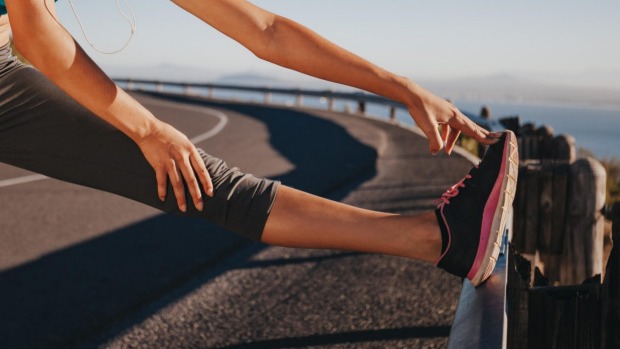How to put your best foot forward to avoid injury
Find out why feet are the most important part of a runner’s body

Feet tend to get a bad rap. Lots of people say they are the ugliest part of the body and avoid touching them. Others neglect them – letting toenails get ingrown, corns and calluses to develop and tinea to spread.
Our feet are capable of handling hundreds of tons of force every day, and runners often give their feet a bashing during events or injure them from overuse and impact-related injuries
The most common injuries runners experience to their feet include stress fractures and plantar fasciitis.
Stay connected
Podiatrist, movement specialist, author and Nurture Her speaker Dr. Emily Splichal says most of these injuries are due to a disconnect between the foot and the ground.
“The foot is the only contact point our body has with the ground when we run. Therefore, it’s an important gatekeeper to impact forces and loading responses,” says Dr Splichal.
“Any disconnection a runner has between the foot and ground can create a misreading of the degree of impact and force the foot and body is experiencing. This misconception alters the way people run and increases the risk of injury.”
She says the number one contributor of feet disconnect is inappropriate or ill-fitting footwear, followed by poor foot strength and mobility.
Strong foundations
“Runners’ feet need to have the perfect balance of foot strength and foot mobility,” says Dr Splichal.
“Each of our feet have 26 bones, 33 joints and more than 100 muscles, tendons and ligaments. They are dynamic structures that need to be strong and malleable.”
When standing, walking and running the feet transfer all the force from your body to the ground. When your feet are weak, the rest of your body compensates for the job your feet can’t do. The stronger your feet, the stronger your foundation is for running.
Ground-level workout
To build foot strength, Dr Splichal recommends runners integrate barefoot training into their warm-up or non-run workouts.
“By taking your shoes off there is an increased engagement or activity in the small muscles of the feet. The foot muscles, like all muscles in the body, need to be trained and strengthened,” she says.
“Running barefoot or in minimal shoes provides more sensory information to the foot to create more accurate loading responses and movement patterns.
She says runners should also integrate the Short Foot exercise into their warm-up and workouts.
“This is a great exercise that connects the foot muscles to the deep core muscles, and to the breath.”
Flex your feet
Dr Splichal says that good foot mobility provides our feet with the ideal range of motion or flexibility to absorb impact forces and to translate this energy higher up into to the body.
“If we lose or decrease foot mobility then that range of motion must be taken from elsewhere in the body. Typically, this is from other joints in the foot or the knee. Taking the range of motion out of other joints leads to compensations, joint and tissue stress, and of course, increased risk of injury,” she says.
Get rolling
Runners should integrate a 10-minute foot release session into their daily workouts. This will help to offset the stress of repetitive impact forces and running.
Dr Splichal recommends standing on a golf ball or lacrosse ball for five minutes each morning and night. Massage the arches, heels, and balls of your feet by simply stepping on the ball and rolling back and forth. Follow the evening session with five minutes of calf myofascial release with a foam roller or lacrosse ball.
She also recommends integrating sufficient foot stimulation when not running. Naboso Insoles provide a great way to get foot stimulation to keep the foot muscles engaged and activated.
“Ordinary footwear blocks the stimulation of your foot and creates delays in the nervous system that can contribute to joint pain, loss of balance and inefficient movement patterns,” says Dr Splichal.
“Naboso insoles open up your foot-to-brain-to-muscle connection, helping you to move better with less harsh impact on your body.”
